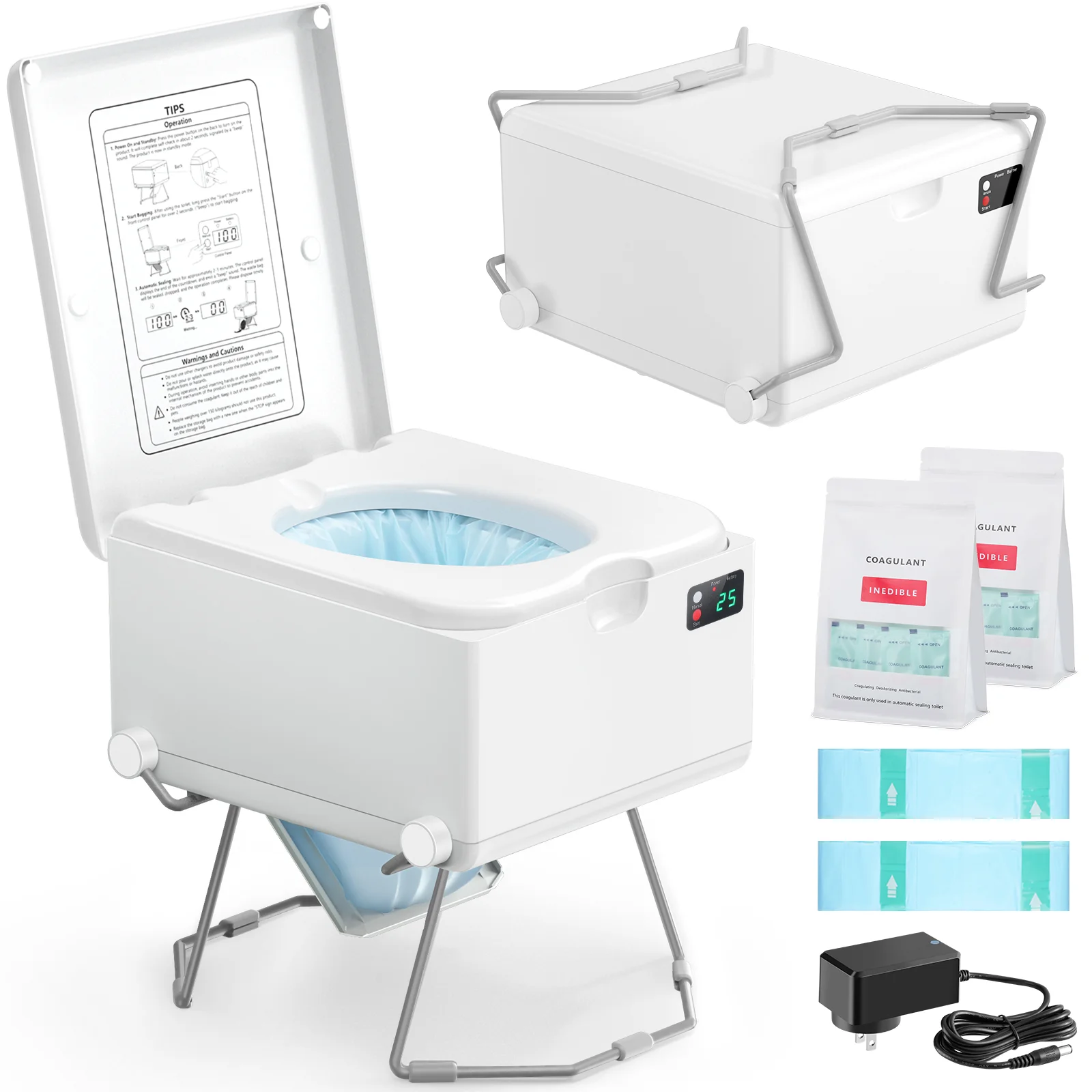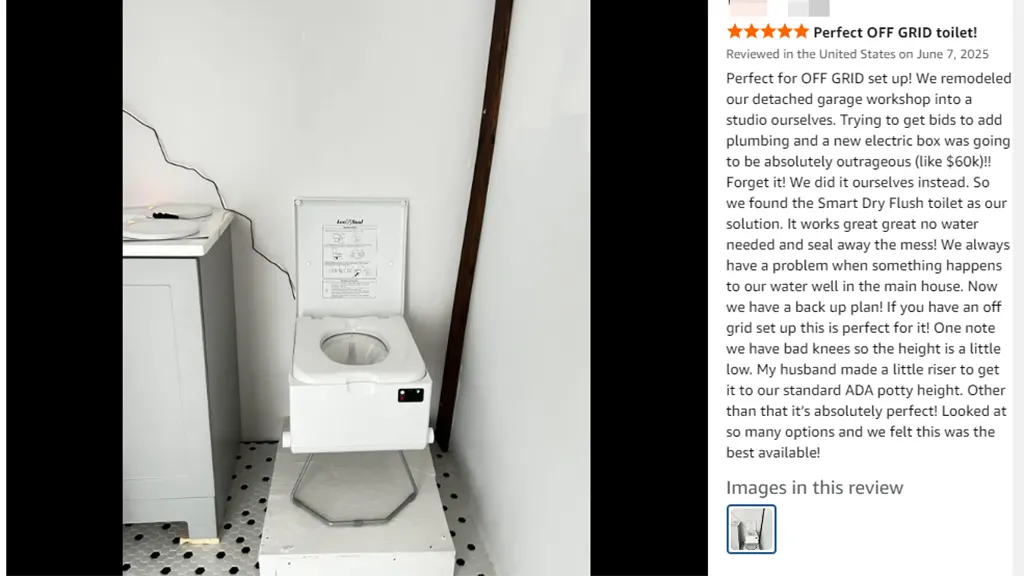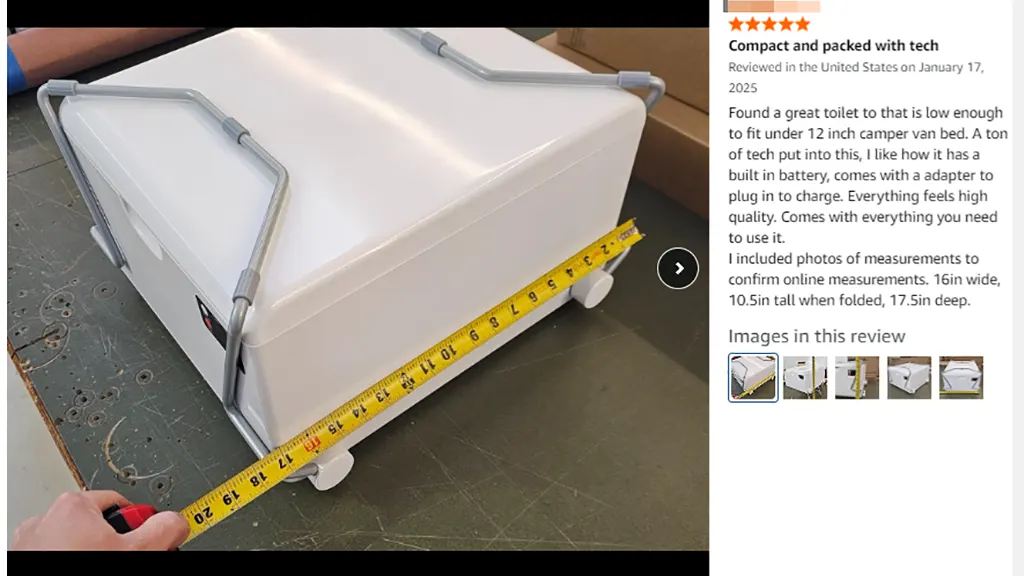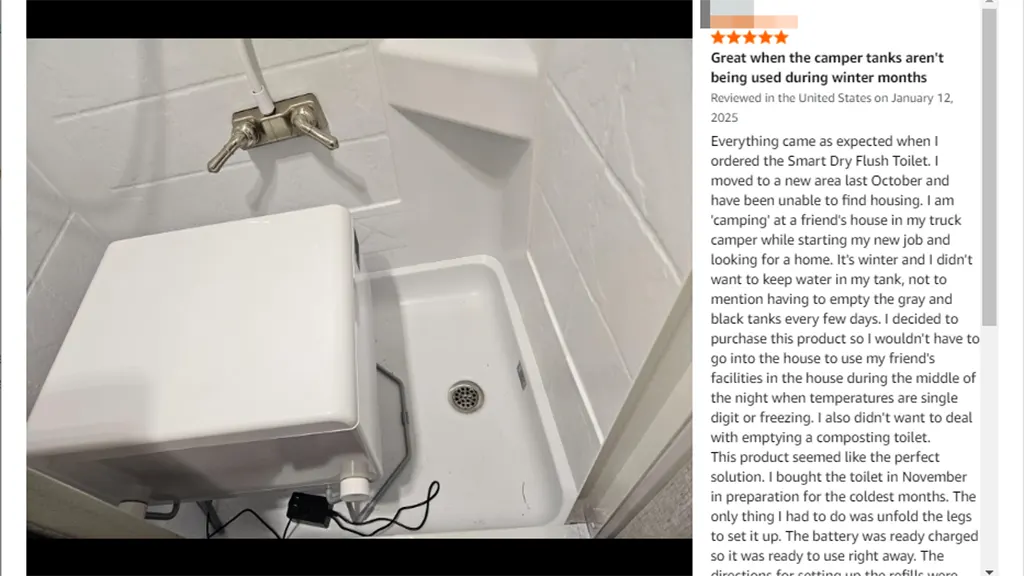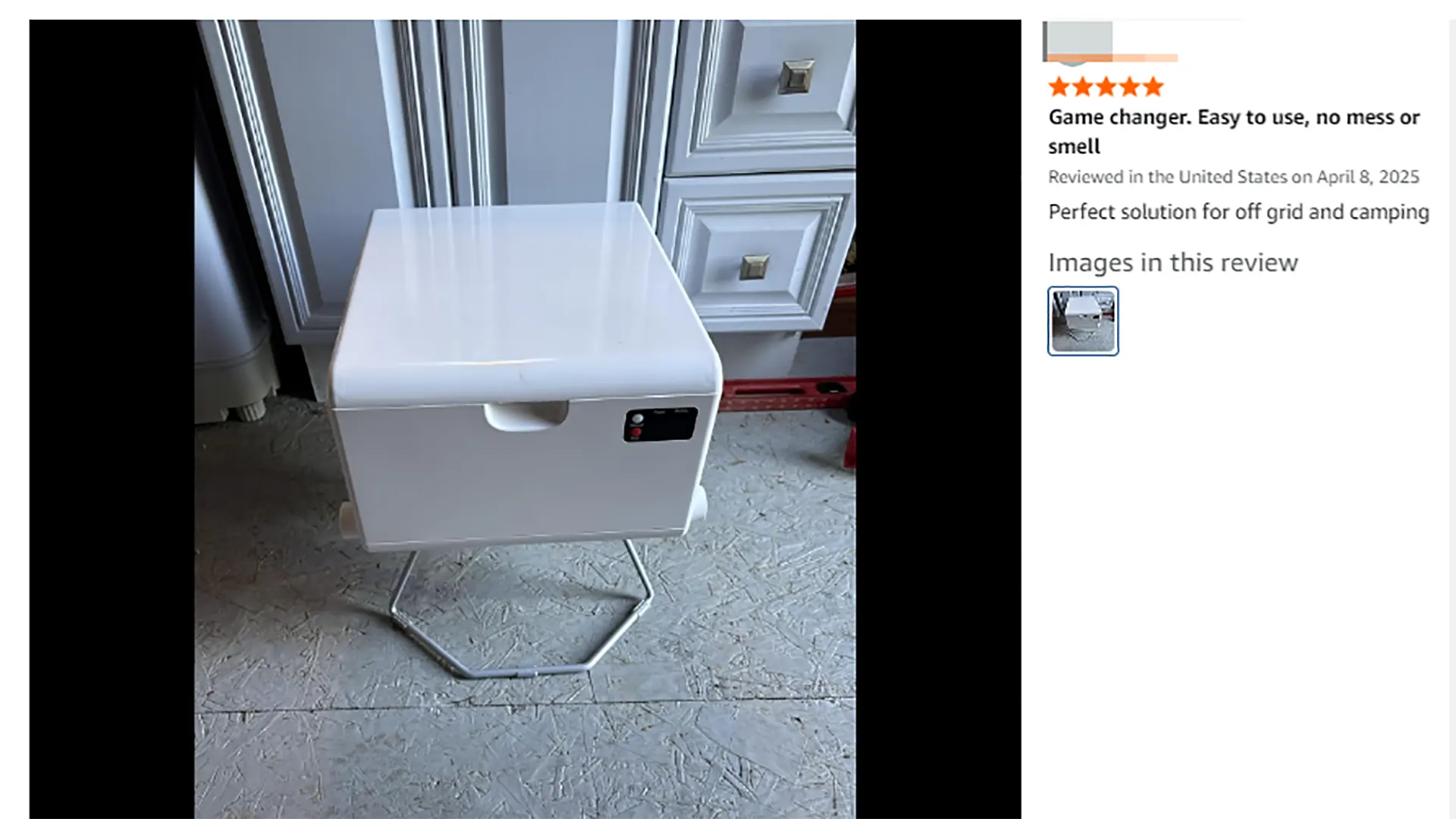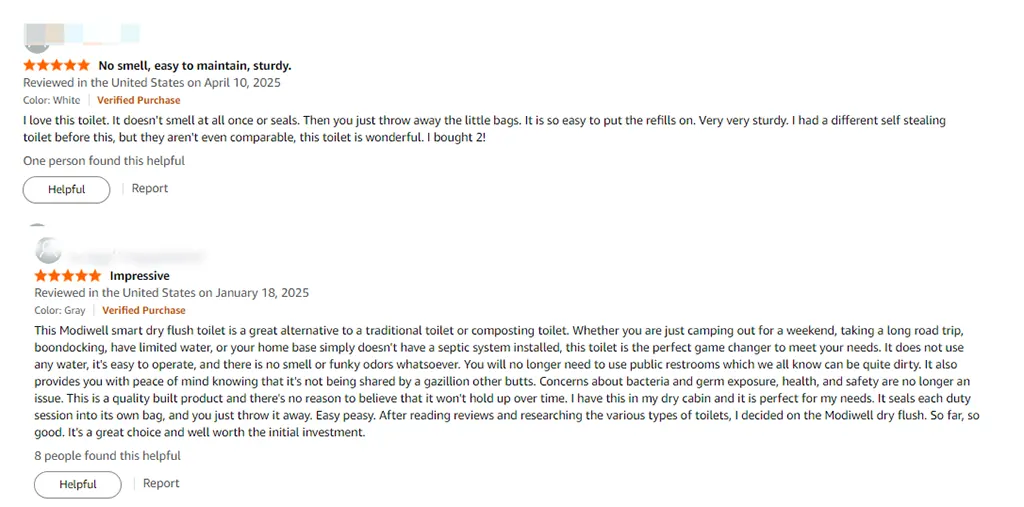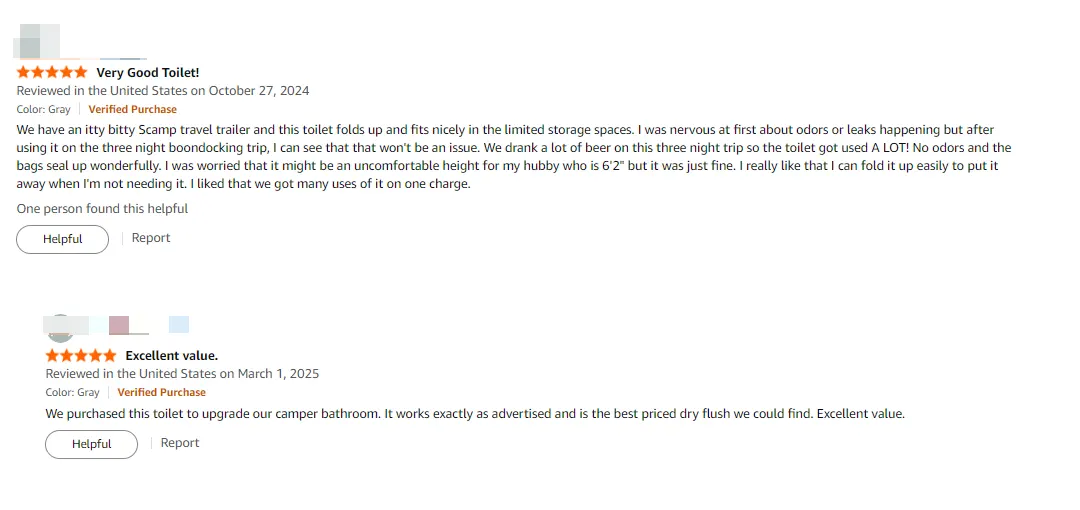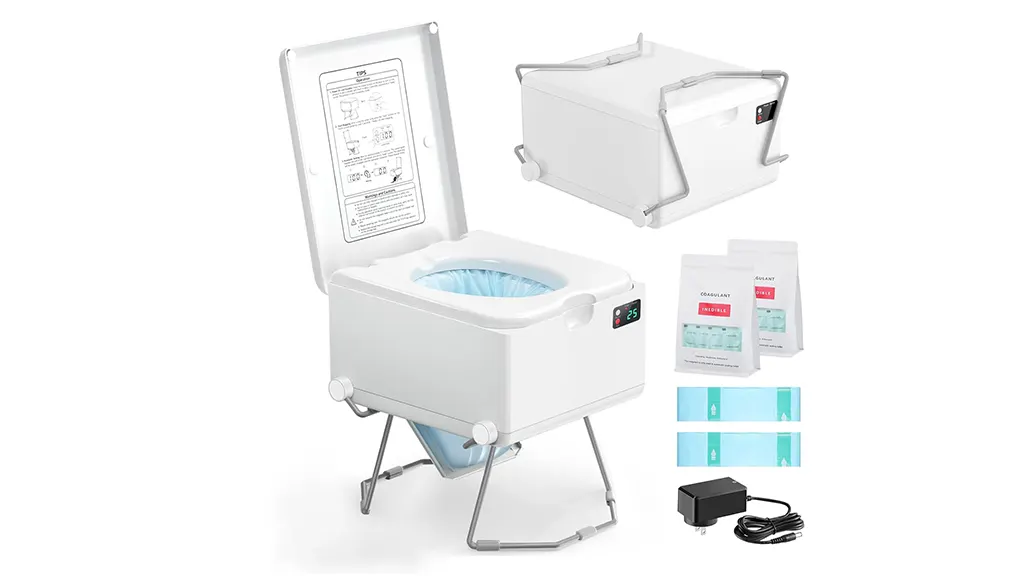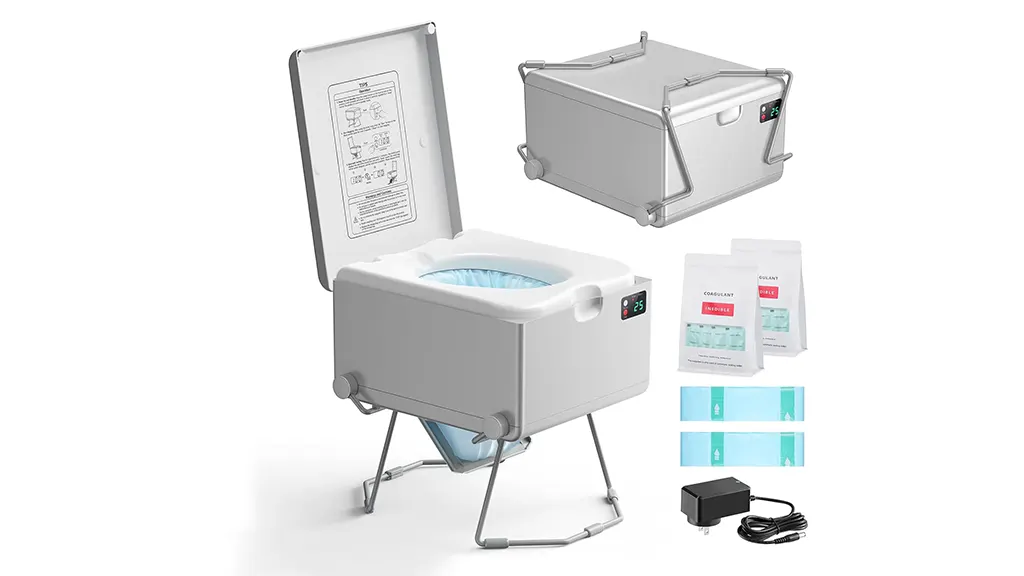Tired of high water bills and the environmental burden of traditional flush toilets? Are you wondering how those simple composting toilets can turn poop into safe or even helpful compost without any water? Maybe you're thinking about getting one but don't understand how they work. Don't worry! This article will explain composting toilets clearly so you can fully understand them.
Detailed Working Principle
The working principle of a composting toilet can be broken down into the following key steps:
Modiwell Dry Flush &Portable Toilets, Cleanliness On-the-Go
Modiwell blends “Modify + Wellness” to transform your experience, offering a truly No Touch, No Hassle, Clean & Carefree solution. Embrace smarter, healthier living, everywhere you go.
Step 1: Collect excrement and cover
How to operate: When using a composting toilet, use it like a normal toilet. After defecation or urination (some models of composting toilets have urine diversion), you need to add cover. Common covers include dry organic materials such as sawdust, coconut bran, and peat moss.
Reason: The main function of the mulch is to absorb moisture, reduce odor, and increase carbon content. Naturally occurring microorganisms need the right carbon-nitrogen ratio to effectively decompose organic matter. The ideal ratio is usually between 25 and 30 parts carbon to 1 part nitrogen. Adequate carbon sources can provide energy for microorganisms and help form stable compost.
Specific operation:After each use, you need to evenly spread a layer of mulch to ensure that the excrement is completely covered. The amount is usually 1/2 to 1 times the volume of the excrement. If your composting toilet is equipped with a stirring device, you usually only need to turn the external handle or press the button after defecation to fully mix the excrement with the mulch.
Note: Don't use wood chips that have paint or chemicals on them. Pick cover material that is dry and doesn't have mold.
Step 2: Microbial decomposition
How to operate:Waste and cover material go into the composting bin under the toilet. There, tiny living things that need air (aerobic microorganisms) start to break down the organic stuff. If your toilet has a mixer, using it regularly helps get more air into the composting pile. This lets the tiny living things work better.
Why: Microorganisms are at the heart of the composting process. They break down complex organic matter into simpler, stable compounds such as carbon dioxide, water, and humus.
Specific guidance: Make sure the compost bin has good airflow. This gives the tiny living things enough air. Some waterless composting toilets have fans to help with this.
Notes: Don't pour a lot of liquid into the compost bin. This can lower the oxygen and cause bad smells and slow down how things break down.
Step 3: Moisture management
How to operate: Moisture is produced during the composting process. Some advanced composting toilets are equipped with drainage systems to drain excess liquid (leachate).
Why: Proper moisture levels are essential for microbial activity. Too much moisture inhibits the growth of aerobic microorganisms, leading to anaerobic decomposition and odor. If the liquid is urine, too much ammonia will kill the microorganisms. Urine diversion helps control humidity and reduce the effects of ammonia. However, an overly dry environment can also slow decomposition.
Specific instructions: If your composting toilet has a way to drain liquids, check the container that catches the liquid often and empty it. If it separates pee, clean that part regularly too.
Notes: Try to avoid dumping large amounts of non-excremental liquids into the composting toilet. Pay close attention to the moisture level of the compost, neither too wet nor too dry.
Step 4: Ventilation
How to do it: Many composting toilets have ways to get air in and out. This can happen naturally or with a small fan.
Why: Air helps give oxygen to the tiny living things. This makes them break things down faster and also gets rid of wetness and smells.
Specific instructions: Make sure the ventilation ducts are unobstructed. For models equipped with fans, check the fans regularly to see if they are working properly.
Notes: Good ventilation is key to preventing odors.
Step 5: Stabilization and removal of compost
How to do it: After a period of time (usually several months to a year), the contents of the compost bin will gradually stabilize and become soil-like humus. Depending on the design of the toilet, you will need to remove mature compost regularly.
Why: Stable compost is much smaller in volume and odorless, making it safe to dispose of or use for gardening (depending on local regulations).
Specific Instructions: Follow the instructions in the manual of the composting toilet you purchased for removing the compost.
Notes: Wearing gloves is recommended when handling compost. Dispose of the final compost product appropriately according to local regulations.
Additional Tips
Maintain a balance of carbon and nitrogen: Mulch provides carbon, and excrement provides nitrogen. A proper carbon-nitrogen ratio (usually 25:1 to 30:1 is recommended) helps the composting process to be more efficient. Observe the state of the compost more often. If there is an odor or decomposition is slow, it may be that the carbon source is insufficient. Try to increase the amount of mulch.
Think about the temperature: Tiny living things work best when it's warm. Even though they make some heat when breaking things down, it might take longer in cold weather. Try not to put the composting toilet in very cold places. Also, the compost needs to get hot enough to kill harmful germs. This might be hard to do in things like RVs that don't have good insulation and heating.
Don't add things that break down slowly: Keep plastic, metal, chemicals, and other things that don't rot out of the composting toilet.
Maintain it regularly: Clean and take care of your composting toilet like the instructions say. This will help it work well and last.
Conclusion
Through this article, you should now clearly understand how composting toilets work. This eco-friendly way of using the toilet saves water and also reduces environmental pollution. Composting toilets are a sustainable and green sanitation solution. They use natural processes to turn waste into valuable resources. This reduces our need for water and lessens the burden on the environment. If you're looking for a greener lifestyle or need a toilet where water is scarce, a composting toilet is definitely worth thinking about.
FAQs
Does a waterless composting toilet have an odor?
A well-designed and properly used composting toilet will not have a noticeable odor. The key is to use adequate cover, maintain good ventilation, and avoid pouring too much liquid.
Can the compost produced by a composting toilet be used directly for edible crops?
Different countries and regions have different regulations on the reuse of compost. Generally speaking, human waste compost needs to be fully stabilized and treated at high temperatures before it can be used for edible crops. It is recommended to follow local regulations and guidelines, or use the compost for ornamental plants.
Does a composting toilet require electricity?
Some luxury waterless composting toilet models are equipped with fans, heating elements or stirring devices, which require electricity. But there are also many passive composting toilets that do not rely on electricity. You can choose the right model according to your needs and environment.
Are there other environmentally friendly options besides composting toilets?
In addition to composting toilets, you can also consider the Modiwell waterless toilet. Its main feature is that it does not need to be cleaned, and it automatically seals the garbage bag for easy disposal. It also uses biodegradable garbage bag film that meets the EU EN 13432 industrial compostability standard, which is another convenient and environmentally friendly sanitation option.


